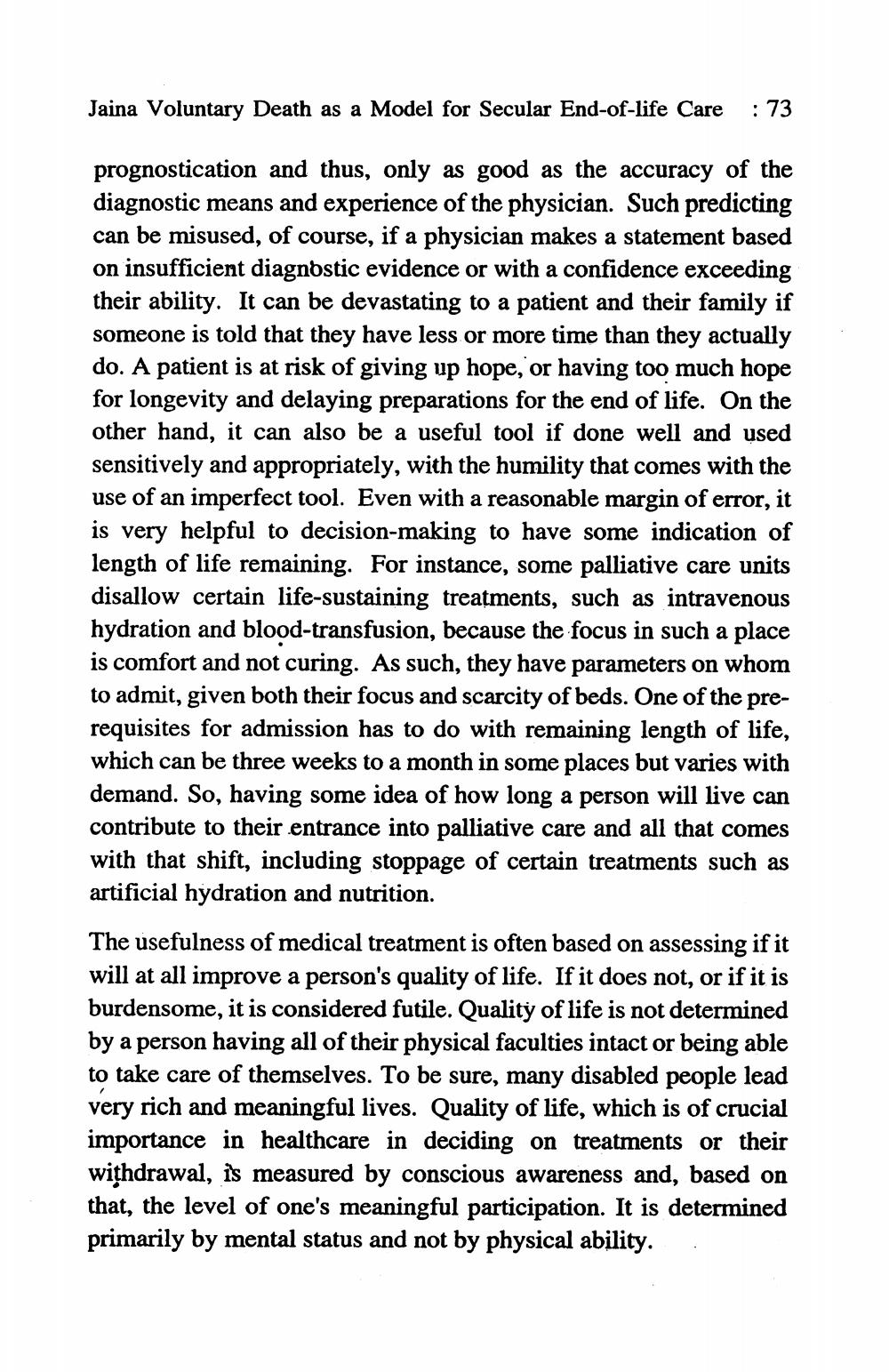________________
Jaina Voluntary Death as a Model for Secular End-of-life Care : 73
prognostication and thus, only as good as the accuracy of the diagnostic means and experience of the physician. Such predicting can be misused, of course, if a physician makes a statement based on insufficient diagnostic evidence or with a confidence exceeding their ability. It can be devastating to a patient and their family if someone is told that they have less or more time than they actually do. A patient is at risk of giving up hope, or having too much hope for longevity and delaying preparations for the end of life. On the other hand, it can also be a useful tool if done well and used sensitively and appropriately, with the humility that comes with the use of an imperfect tool. Even with a reasonable margin of error, it is very helpful to decision-making to have some indication of length of life remaining. For instance, some palliative care units disallow certain life-sustaining treatments, such as intravenous hydration and blood-transfusion, because the focus in such a place is comfort and not curing. As such, they have parameters on whom to admit, given both their focus and scarcity of beds. One of the prerequisites for admission has to do with remaining length of life, which can be three weeks to a month in some places but varies with demand. So, having some idea of how long a person will live can contribute to their entrance into palliative care and all that comes with that shift, including stoppage of certain treatments such as artificial hydration and nutrition.
The usefulness of medical treatment is often based on assessing if it will at all improve a person's quality of life. If it does not, or if it is burdensome, it is considered futile. Quality of life is not determined by a person having all of their physical faculties intact or being able to take care of themselves. To be sure, many disabled people lead very rich and meaningful lives. Quality of life, which is of crucial importance in healthcare in deciding on treatments or their withdrawal, is measured by conscious awareness and, based on that, the level of one's meaningful participation. It is determined primarily by mental status and not by physical ability.
/




